Garden Road in Colaba offers hope and help to other lanes looking to model on its lines
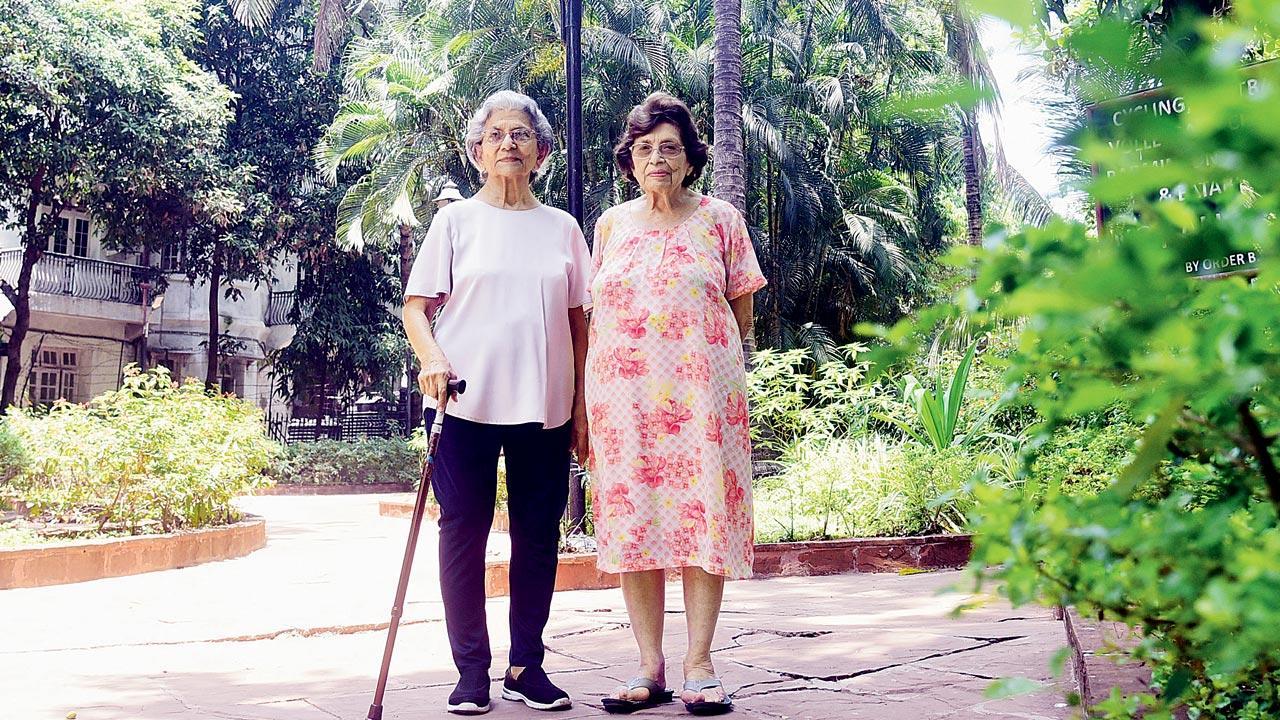
Beroze Barjorji and Gul Karanjia in the garden naming the lane. Pic/Shadab Khan
 My last column was titled Little Lane Lost. This one is literally Little Lane Loved. Garden Road, leading left off Colaba Causeway, is an outstanding example of local vigilance successfully improving the civic affairs and aesthetics of a neighbourhood.
My last column was titled Little Lane Lost. This one is literally Little Lane Loved. Garden Road, leading left off Colaba Causeway, is an outstanding example of local vigilance successfully improving the civic affairs and aesthetics of a neighbourhood.
ADVERTISEMENT
Executed along with the 1873-instituted Port Trust’s dock projects, the Apollo Bunder reclamation scheme, south of Fort, leased estates on which handsome three-to-four storey buildings rose by the mid-1930s. In a mix of architectural styles, these line parallel Colaba lanes joining the Apollo promenade from the Causeway.
Garden Road seems fortunate enough to be saved from going the way of many neglected gullies, thanks to a band of civic-minded senior citizens. They are impressively led by Gul Karanjia in Mody Mansion, at the intersection of Garden and BK Boman Behram Marg (Mereweather Road). Their carefully conceived measures have extended to appointing an efficient system of still functioning private security in the lane. The tap-thud of the patrolling night watchman’s stick was echoed by a second —Karanjia’s husband blowing a whistle. It expectedly got a lively answering toot from the chowkidar, to confirm he was awake.
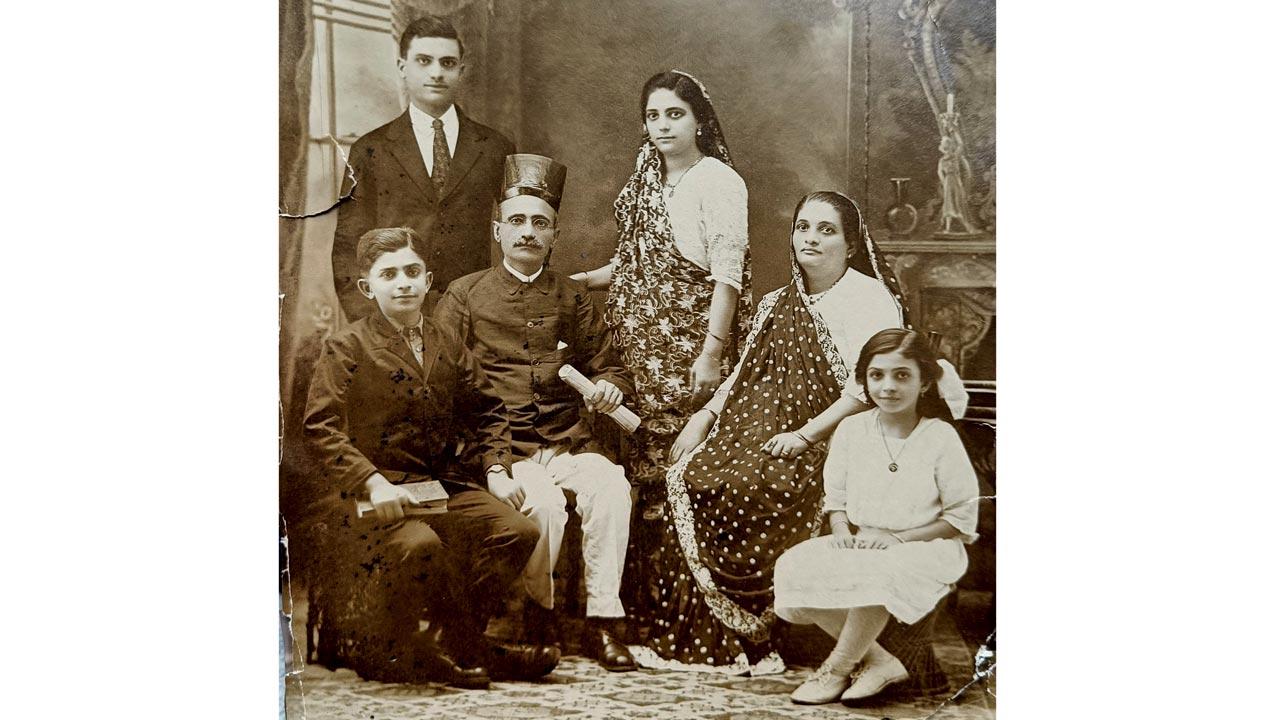 Family photo of architects Bejonji Bana and his son Rustom (extreme left)
Family photo of architects Bejonji Bana and his son Rustom (extreme left)
Starting with one of Garden Road’s best-looking buildings: Dhun Mahal. Firstly, it is on the street’s verdant side. A sturdy banyan, flaming gulmohars and cooling Asoka trees front Habib Court, Dhun Mahal and Broacha House, tail-ending east at the small Port Trust Park.
The relatively barer opposite flank presents the neat facades of Malabar Mansion, Ascot Hotel, Rutton Manor, Dina Lodge, Hotel Godwin, Garden Hotel and Sorab House. The first and last buildings of this row were go-to hubs in my mothering days to 1990s-born children. Souvenirs in Malabar Mansion has, of course, been the mini Hamleys of SoBo since 1960. We marvel at how Faisal Khatri chooses spot-on a variety of entertaining toys to stimulate kids at every age. In Sorab House, mine explored with equal delight a creative cornucopia at Akshara, with excellently curated library books for babies to young adults.
To return to a favourite.
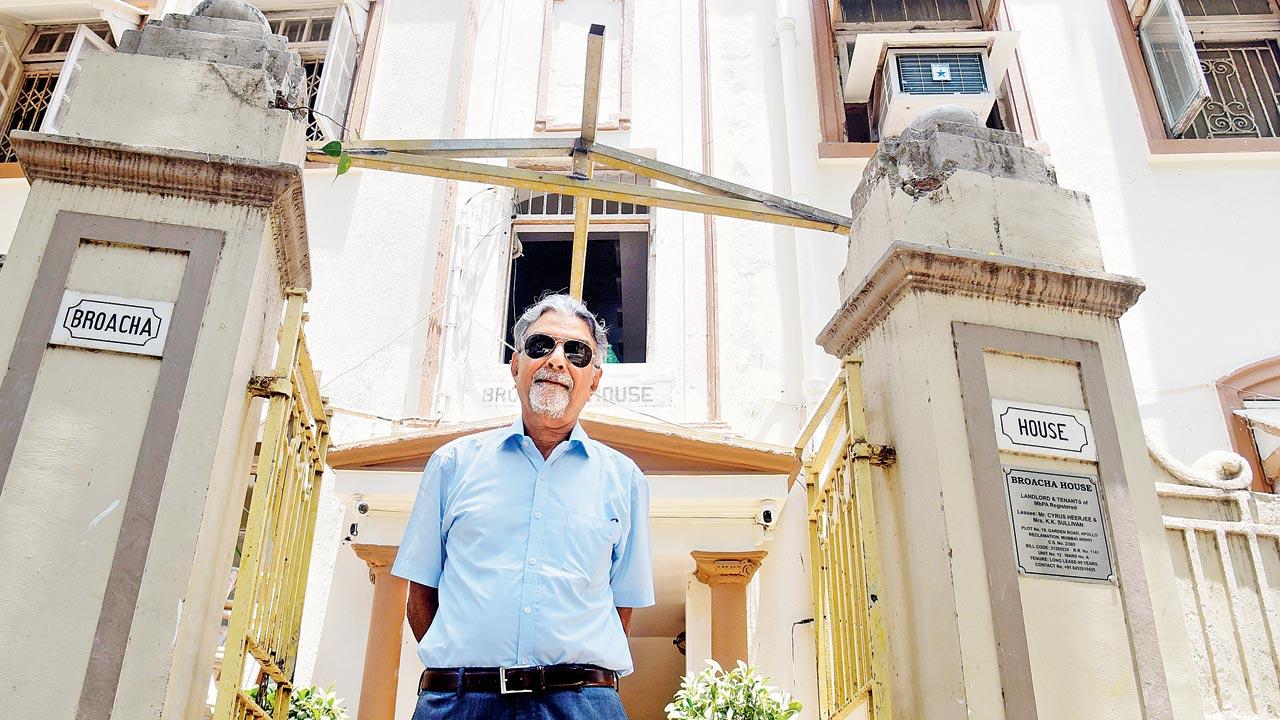 Cyrus Hirjee outside Broacha House. Pic/Shadab Khan
Cyrus Hirjee outside Broacha House. Pic/Shadab Khan
Dhun Mahal was attractively designed by Bejonji Bana and his son Rustom, whose firm, Merwanji, Bana & Co., was responsible for several buildings within the city’s World Heritage Site precinct. Bejonji named this after his wife Dhunmai.
“I call Gul Karanjia the guardian angel of Garden Road and Dinoo Dordi the godmother of Dhun Mahal,” says Niloufer Dastur in Dhun Mahal. Dordi sweetly brushes off complimentary accounts of her sitting in a chair on the road, supervising the building’s restoration. That entailed gauging the precise fixing of redone stucco embellishments on external walls painted the smooth grey-blue colour of wedgwood.
“Taxis parked on our road are a help rather than a nuisance,” Dordi says. “When I needed a vehicle at sunrise to attend the prayers for someone deceased, a driver called Badruddin readily dropped me to Doongerwadi safely on time and refused the fare payable. Because of the sad situation, he said—very respectful of him.”
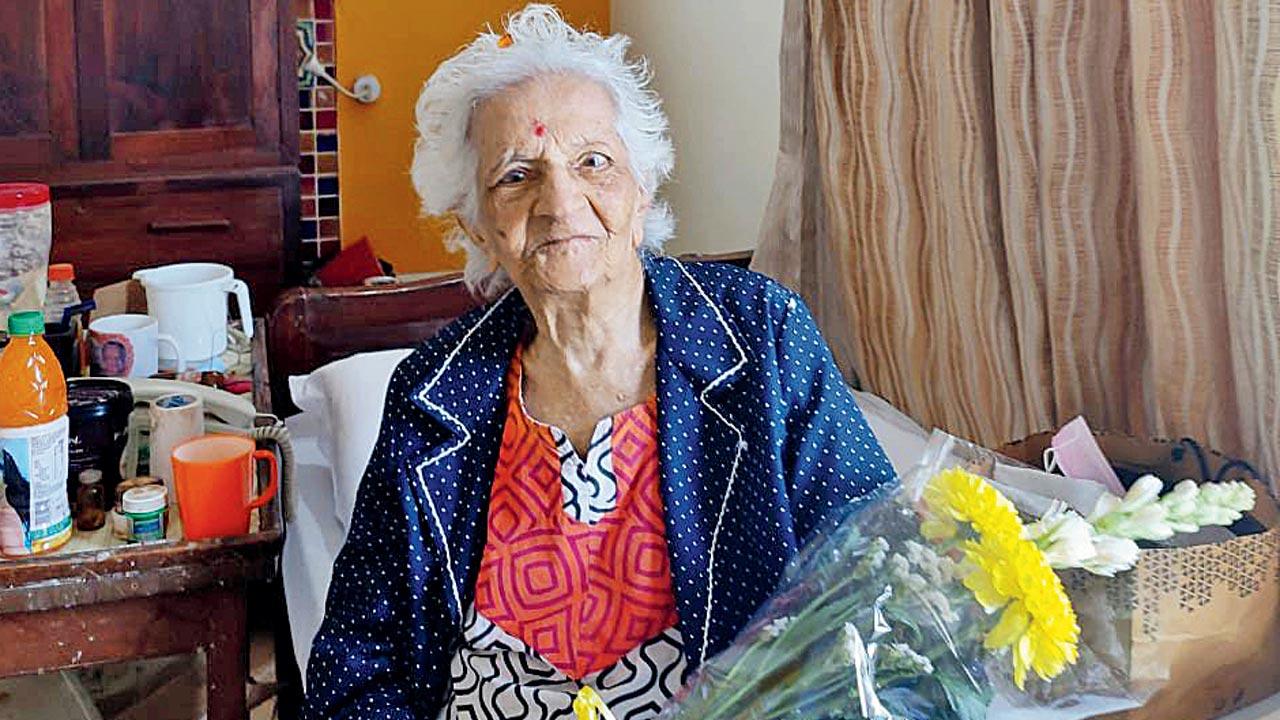
Nora Raymond, possibly the road’s oldest resident, on her 102nd birthday this January
Dhun Mahal old-timers proffer long-forgotten facts. A stream of toddlers came here for Sinora Gonsalves’ coaching for admission to premier schools. Families would obtain a pass from the Port Trust to enter the garden christening the street. “It was pretty and peaceful, except for hawkers who were patronised by Middle Eastern regulars booking hotel rooms during monsoon months,” recalls a resident. “Things got unruly and noisy then. They threw down clothes in exchange for vessels sold by loudly shouting vendors. They teased dogs, they bought caged monkeys and birds. I’ve even seen a parrot shoved into the boot of a car.”
At the Garden Road-Mereweather Road junction, Sorab House was leased by Sorabji Dubash and his daughter Mithibai. Sorabji passed away in Karachi in 1954. Eleven years later, immovable properties belonging to Pakistani nationals, including Sorab House, were vested with the Custodian of Enemy Property and remain so to date.
Bombay’s mercantile pursuits essentially contoured its inward map. Cotton supplies were stored on the Apollo Bunder strip. Sailing veteran Cyrus Heerjee remembers his mother speaking of a water inlet with boats coming up to the present-day site of Hotel Godwin and Garden Hotel.
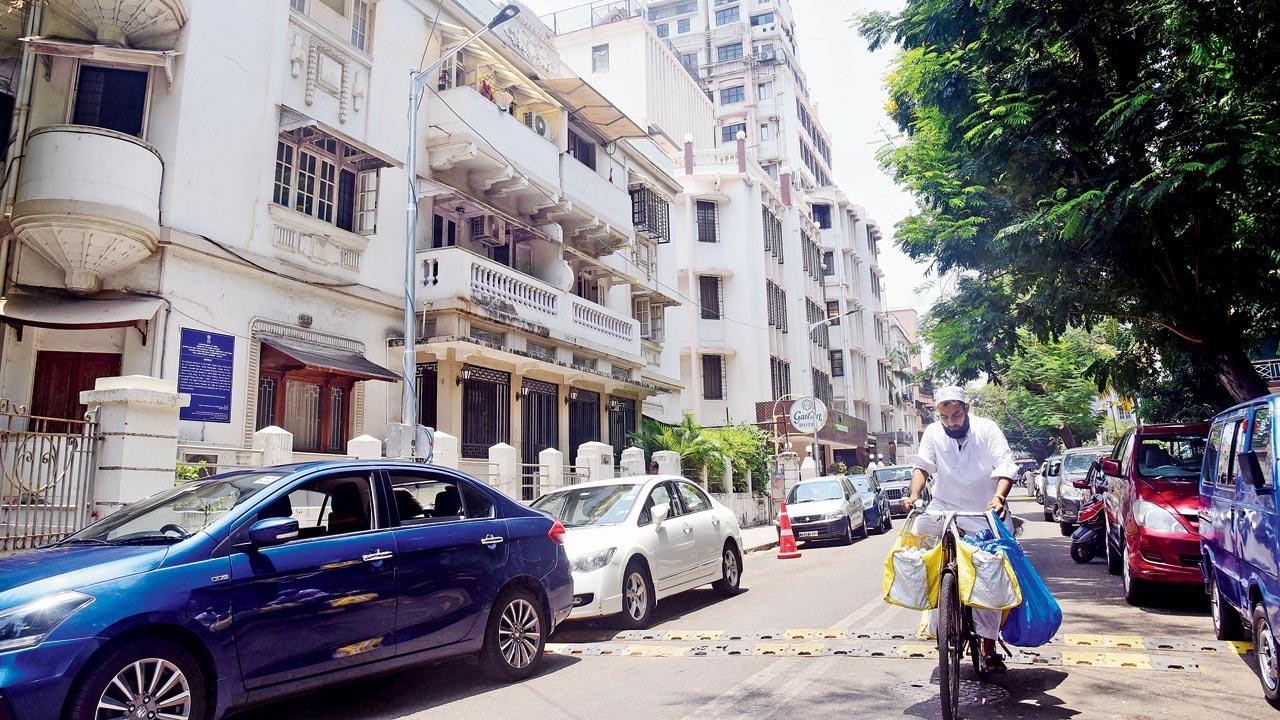 Garden Road in Colaba
Garden Road in Colaba
Heerjee traces his association with Broacha House to his maternal grandfather, Kaikhushroo Broacha. Offering interesting vignettes of early life on Garden Road, he mentions the BEST A-1 route bus trundling through the lane, with a stop opposite the Salvation Army building on Mereweather Road, and two bonesetter sisters who rode to their Dhobi Talao clinic in a ghoda gaadi.
Growing up in Broacha House, cardiologist Robin Pinto has a distinct memory of Madame Gourdon, wearing block heels and a superior air, surveying the street from the balcony of the Garden Hotel which she looked after. Her expat husband Emile presided over Churchgate’s iconic Gourdon restaurant, renowned for succulent steak and Welsh rarebit.
“But she was stern of demeanour, grim and growling at us,” Pinto laughs, recollecting schoolboy pranks, playing soccer and rowdy kick-the-can games. “During the Emergency, kids weren’t encouraged to play football on the street. We all contributed for the ball, except our friend Mark, who rarely played with us. When the poor guy once barely picked up the ball, he and I were hauled to the police station for questioning. ‘What is your name?’ they asked. Mark answered ‘Pinto’. He really was Mark Pinto de Menezes. ‘School?’ He said ‘Campion’. That was where I went too. ‘What does your father do?’ Again, Mark truthfully replied ‘Doctor’. His was a general physician. I’d already stated my dad’s name. Dr Ivan Pinto. Thinking that Mark mocked them with identical responses, the cop gave him a resounding slap!” Hearing of Robin’s escapade, his music teacher mother, Cynthia Pinto, continued with evening piano lessons, blithely saying, “Serves him right, I’ve told him not to play on the road.”
Across from them, dentist Kali Kapadia personally polished to exacting perfection his gleaming green Jaguar. Currently, a deep burgundy, the sleek vintage
beauty purrs on in mint condition. Dr Kapadia’s daughter Sherry Merchant shows recent photographs of the 1952 Jag Mark VII on her children’s wedding days. Her cloth merchant grandfather, Hormusji Kapadia, lived in Khetwadi. When he obtained the lease of a pair of contiguous Garden Road plots, he constructed Kali Lodge (Dina Lodge today) in 1933. Naming it after his little boy Kali, he ensured every room had different Minton tiles, laid with individual borders, which survive till date.
With Hormusji passing away, the building changed hands and its name, when it went to Ruttonshaw Shroff, whose sons subsequently erected Rutton Manor next door. Russi Daruvala of Dina Lodge shares how Ruttonshaw, his maternal grandfather, came to Garden Road from a Gamdevi home. His bad knee issue necessitated shifting to the ground floor of Kali Lodge. Dina being Ruttonshaw’s wife, the property was renamed Dina Lodge.
A gentle couple from Dina Lodge whom I will always cherish knowing was Katie and Baji Chinoy. Baji Uncle exchanged LPs with my music lover dad. Particularly poignant was the Polydor vinyl, “Neville Chinoy: Tribute to a Prodigy”, showcasing the virtuosity of the Chinoys’ pianist son whose tragic air crash death left the music world grief-stricken.
When Ruttonshaw Shroff’s sons put up Rutton Manor in 1952, one of its first tenants was the father-in-law of Gul Karanjia, the feisty octogenarian acknowledged as the street’s trusted lieutenant in charge. In her breezy Mody Mansion flat, Karanjia recounts how it has proved a truly tough, but rewarding journey to keep the lane green, clean and free of “bad elements” vitiating the atmosphere. Some of these are junkies in the garden, “earlier brash-now better behaved” guests checking into the road’s trio of Godwin-Garden-Ascot Hotel and taxi drivers ferrying them back and forth.
Differing from Dinoo Dordi’s kinder view on the last, Karanjia believes the parked cabs are a nuisance, sometimes blocking entry of residents’ cars trying to turn into their own compound. “The park too isn’t what it used to be. It was like a lovely Japanese garden in our childhood,” she says.
With us at Karanjia’s home for tea and arrowroot biscuits (we thought were near-extinct), her friend and Sorab House neighbour, Beroze Barjorji, adds, “At the time of war with China, the garden had a bunker, in case of bombing. That’s the cemented and covered part you see now. It is for us to work with the BMC to effectively maintain such a nice neighbourhood. To build is one thing. To protect, another.”
Let’s hear it for both.
Author-publisher Meher Marfatia writes fortnightly on everything that makes her love Mumbai and adore Bombay. You can reach her at meher.marfatia@mid-day.com/www.meher marfatia.com
 Subscribe today by clicking the link and stay updated with the latest news!" Click here!
Subscribe today by clicking the link and stay updated with the latest news!" Click here!







